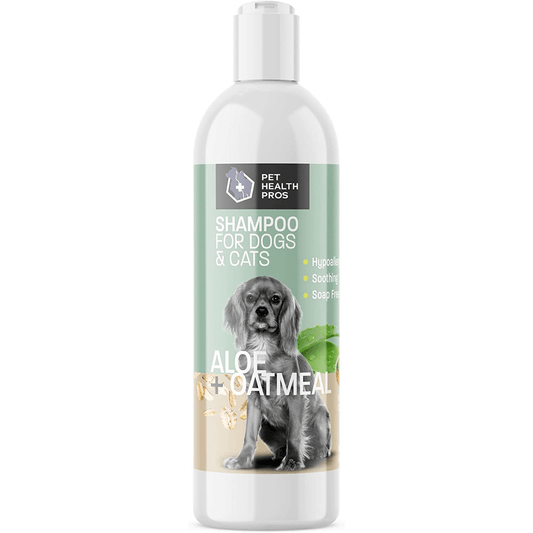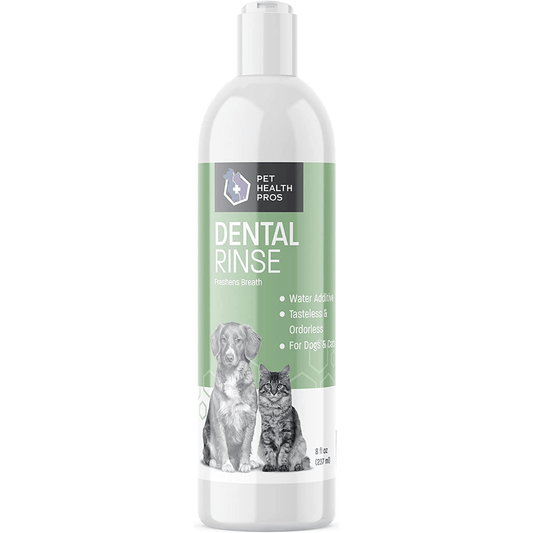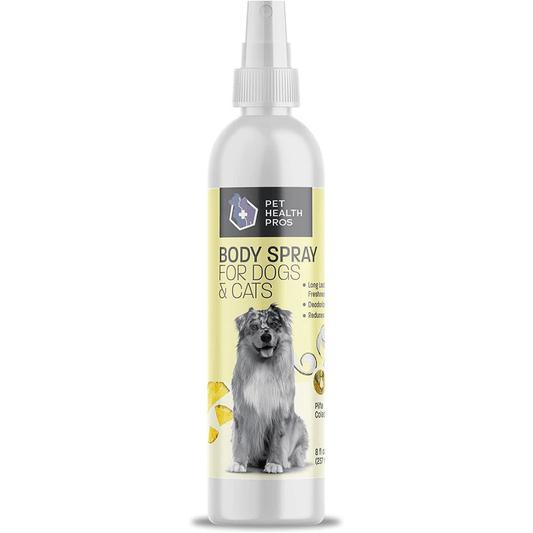If you're a dog owner, you might have heard about using Dramamine for motion sickness in dogs. But figuring out the right dosage can be a bit tricky. This guide breaks down everything you need to know about dog Dramamine dosage, from understanding what it is to how to safely administer it to your furry friend.
Key Takeaways
- Dramamine is used to treat motion sickness in dogs.
- Dosage depends on factors like your dog's size and health.
- Always consult your vet before giving your dog any medication.
- Watch for side effects and know when to seek help.
- There are alternatives to Dramamine for managing motion sickness.
Understanding Dramamine and Its Uses
So, your dog gets carsick? It's a bummer, I know. Dramamine is often the go-to for motion sickness, but it's good to know what it is and how it works before you give it to your furry friend. Let's break it down.
What Is Dramamine?
Dramamine is basically an over-the-counter antihistamine. You probably know it as a human medication, but vets sometimes recommend it for dogs too. Its main job is to prevent and treat nausea, vomiting, and dizziness. It's not a cure-all, but it can make travel or other stressful situations easier on your pup. It comes in different strengths, so it's important to get the dosage right, which we'll talk about later.
How Does Dramamine Work?
Okay, so how does this stuff actually work? Dramamine works by blocking histamine, a chemical that your body produces. Histamine can trigger nausea and vomiting, especially when it comes to motion sickness. By blocking histamine, Dramamine helps to reduce the signals that cause your dog to feel sick. It also has a sedative effect, which can help calm down an anxious dog during travel. Think of it like hitting the mute button on the inner ear's distress signals.
Common Uses for Dogs
So, when would you actually use Dramamine for your dog? Here are a few common scenarios:
- Motion Sickness: This is the big one. Car rides, plane trips, or even boat trips can cause motion sickness in dogs. Dramamine can help prevent vomiting and nausea.
- Anxiety: Because of its sedative effects, Dramamine can sometimes be used to calm anxious dogs during stressful situations like thunderstorms or vet visits. However, there are better alternatives to Dramamine for anxiety, so talk to your vet first.
- Vestibular Issues: Some dogs have problems with their inner ear (the vestibular system), which can cause dizziness and loss of balance. Dramamine can help manage these symptoms.
- Travel: If you're planning a trip with your dog, Dramamine can be a lifesaver. It can help make the journey more comfortable for both of you. Just make sure to test it out at home first to see how your dog reacts.
Determining the Right Dosage for Your Dog
Alright, so you're thinking about giving your dog Dramamine. That's cool, but figuring out the right amount is super important. You don't want to give too little and have it not work, but you definitely don't want to give too much and make your pup sick. It's a balancing act, for sure.
Factors Influencing Dosage
Okay, so here's the deal. It's not just about your dog's weight, though that's a big part. Other things matter too, like:
- Age: Puppies and older dogs might need different doses.
- Breed: Some breeds are more sensitive to medications than others.
- Health: If your dog has any health problems, especially liver or kidney issues, that can change things.
- The specific Dramamine product: Different formulations have different strengths.
General Dosage Guidelines
Okay, so here's a rough guide. The standard dose of Dramamine for dogs is about 2-4 mg per pound of body weight, given every 8 hours. But seriously, don't just take my word for it. This is just a starting point. Here's a little table to give you an idea:
| Dog Weight (lbs) | Dramamine (mg) | Frequency |
|---|---|---|
| 5-10 | 5-20 | Every 8 hrs |
| 11-25 | 22-50 | Every 8 hrs |
| 26-50 | 52-100 | Every 8 hrs |
| 51-75 | 102-150 | Every 8 hrs |
Consulting Your Veterinarian
Seriously, the best thing you can do is talk to your vet. They know your dog's health history and can give you the safest and most accurate dosage. Don't skip this step! It's not worth the risk to guess. They might even have a better suggestion than Dramamine, depending on why you need it.
Your vet can consider all the factors specific to your dog and provide tailored advice. They can also rule out any underlying conditions that might be causing the issue you're trying to treat with Dramamine. Plus, they can tell you about any potential interactions with other medications your dog might be taking.
Administering Dramamine to Your Dog
Okay, so you've got the Dramamine, you've talked to your vet, and now it's time to actually give it to your dog. This part can be tricky, especially if your dog is not a fan of taking pills. Let's break down the best ways to get this done.
Forms of Dramamine Available
Dramamine comes in a couple of forms, which can affect how you give it to your dog. You'll typically find it as:
- Tablets: These are the most common. They can be given whole or crushed.
- Liquid Form: Less common, but easier to administer, especially for smaller dogs or those who refuse pills.
How to Administer the Medication
Here's the deal, getting a dog to take medicine can be a real challenge. Here are a few methods that might work:
- Directly by Mouth: If your dog is cooperative, you can simply open their mouth, place the pill far back on their tongue, and gently hold their mouth closed until they swallow. A little throat massage can help.
- Pill Pockets: These are treats with a built-in pocket to hide the pill. Most dogs gobble these up without a second thought.
- Mixed with Food: You can crush the tablet and mix it with a small amount of wet food, peanut butter (make sure it's xylitol-free!), or cream cheese. Make sure they eat the entire portion to get the full dose.
Tips for Successful Administration
Getting your dog to take Dramamine doesn't have to be a battle. Here are some tips to make it easier:
- Stay Calm: Dogs can sense your anxiety, so try to be relaxed and confident.
- Make it Positive: Use praise and treats to reward your dog after they take the medication. This helps create a positive association.
- Be Consistent: Use the same method each time to avoid confusing your dog.
If your dog consistently refuses to take the medication, don't force it. Contact your vet for alternative solutions or formulations. Sometimes, a different form of the medication or a different approach can make all the difference.
Potential Side Effects of Dramamine
Okay, so you're thinking about giving your dog Dramamine. That's cool, it can really help with car rides and stuff. But like any medication, there are possible side effects you should know about. It's not all sunshine and smooth sailing, unfortunately.
Common Side Effects
The most common side effect of Dramamine in dogs is drowsiness. It makes sense, right? It's an antihistamine, and those tend to make you sleepy. Besides that, some dogs might experience:
- Dry mouth: Your dog might seem extra thirsty.
- Increased heart rate: Keep an eye on their pulse.
- Urinary retention: They might have trouble peeing.
- Vomiting: Although it's used to prevent it, sometimes it can cause it.
These side effects are usually mild and go away on their own. But it's still good to be aware of them so you don't freak out if your dog starts acting a little weird.
Serious Reactions to Watch For
While rare, some dogs can have more serious reactions to Dramamine. These require immediate veterinary attention. Keep an eye out for:
- Seizures: This is a big one and needs immediate help.
- Difficulty breathing: Another emergency situation.
- Severe allergic reaction (hives, facial swelling): Get to the vet ASAP.
- Coma: This is extremely serious and requires immediate veterinary intervention.
When to Seek Veterinary Help
So, when should you actually call the vet? Here's a simple guide:
- If you see any of the serious reactions listed above, don't wait. Call your vet or an emergency vet clinic right away.
- If the common side effects seem really bad or don't go away after a few hours, it's worth giving your vet a call.
- If you're just generally worried about your dog's reaction to Dramamine, it's always better to be safe than sorry. A quick phone call can give you peace of mind.
It's always a good idea to keep your vet in the loop when you're giving your dog any kind of medication, even over-the-counter stuff like Dramamine. They know your dog's health history and can give you the best advice.
Alternatives to Dramamine for Dogs
So, Dramamine isn't the only option if your dog gets carsick or anxious during travel. There are other meds, natural stuff, and even training methods you can try. It's all about finding what works best for your furry friend.
Other Medications for Motion Sickness
Besides Dramamine, a few other medications can help with motion sickness. One common choice is Cerenia (maropitant citrate), which is actually designed to prevent vomiting in dogs. Unlike Dramamine, which is an antihistamine and can cause drowsiness, Cerenia works by blocking the signals in the brain that trigger vomiting. It's often prescribed by vets and can be quite effective, especially for longer trips. Just remember, it's prescription-only, so you'll need to chat with your vet first. Some owners have also found success with prescription anti-anxiety meds, but that's something to discuss with your vet to see if it's the right fit for your dog's specific needs.
Natural Remedies
If you're not keen on giving your dog medication, some natural remedies might help ease their motion sickness. Ginger, for example, has been used for ages to calm upset stomachs. You can give your dog ginger capsules, ginger snaps (make sure they don't have xylitol!), or even ginger tea (cooled down, of course). Some people swear by acupressure, using pressure points to reduce nausea. There are even special acupressure wristbands for dogs. Herbal remedies like chamomile or lavender can also help calm anxious dogs, but always check with your vet before trying any new supplements or herbs to make sure they're safe for your dog.
Behavioral Training Techniques
Sometimes, motion sickness isn't just about the physical aspect; it's linked to anxiety and fear. That's where behavioral training comes in. Start by getting your dog comfortable with the car. Just sitting in the car without going anywhere can be a good first step. Then, try short trips around the block, gradually increasing the distance. Use positive reinforcement, like treats and praise, to create positive associations with car rides.
Desensitization and counter-conditioning can work wonders. The goal is to change your dog's emotional response to car rides from fear and anxiety to something more positive. It takes time and patience, but it can be a long-term solution that doesn't rely on medication.
Here are some tips for behavioral training:
- Start with short, positive experiences.
- Use treats and praise to reward calm behavior.
- Gradually increase the duration of car rides.
- Create a comfortable and safe space in the car for your dog.
Special Considerations for Specific Dog Breeds
Breeds Prone to Motion Sickness
Some dog breeds seem to get carsick more easily than others. It's not an exact science, and individual dogs within a breed can vary a lot, but there are some trends. Younger dogs of any breed are often more prone to motion sickness because the structures in their inner ear, which help with balance, aren't fully developed yet. This usually improves as they get older.
Certain breeds, like those with sensitive stomachs or anxiety issues, might also be more susceptible. For example:
- Boxers: Known for sensitive stomachs.
- Bulldogs: Can have breathing issues that worsen in stressful situations.
- Mixed breeds: Sometimes, a mix of sensitivities can increase the likelihood.
Adjusting Dosage for Small Breeds
When it comes to giving Dramamine to smaller dogs, precision is key. What works for a Labrador isn't going to cut it for a Chihuahua. The biggest thing to remember is that you need to be super careful with the dosage.
Here's why:
- Metabolism: Small dogs often have faster metabolisms, but their bodies are less able to handle higher doses of medication.
- Concentration: It's easy to accidentally give too much if you're not measuring carefully.
- Side effects: Overdosing, even by a little, can lead to more pronounced side effects in small breeds.
Always use the smallest effective dose. If you're using tablets, you might need to cut them into very small pieces, which can be tricky. Liquid forms of Dramamine can be easier to measure accurately for tiny dogs.
Consulting Breed-Specific Guidelines
While general dosage guidelines for Dramamine exist, it's always a good idea to check if there are any breed-specific considerations. Some breeds might be more sensitive to the drug's effects, or have pre-existing conditions that could interact with Dramamine.
Here's what to keep in mind:
- Genetic predispositions: Certain breeds are prone to specific health issues that might influence how they react to medications.
- Veterinarian insights: Your vet knows your dog's health history and breed-specific risks, making them the best source of information.
- Online resources: Look for reputable breed-specific forums or websites, but always double-check the information with your vet.
Monitoring Your Dog After Administration
So, you've given your dog Dramamine. Now what? It's important to keep a close eye on them to make sure the medication is working as expected and that they aren't experiencing any adverse reactions. Here's what to look for:
Signs of Effectiveness
How do you know if the Dramamine is actually helping? Well, the most obvious sign is a reduction in the symptoms you were trying to treat in the first place. If your dog was experiencing motion sickness, you should see a decrease in nausea, vomiting, and excessive drooling. If it was for anxiety, hopefully, you'll see them calmer and more relaxed. It usually takes about 30-60 minutes for the medication to kick in, so be patient.
What to Observe Post-Dosage
After giving Dramamine, watch your dog closely for any changes in behavior or physical condition. Here's a list of things to keep an eye on:
- Sedation levels: Is your dog excessively sleepy or lethargic?
- Coordination: Are they walking normally, or are they wobbly or unsteady?
- Appetite: Are they eating and drinking normally?
- Breathing: Is their breathing regular and not labored?
- Any signs of allergic reaction: Hives, swelling, or difficulty breathing (seek immediate vet attention if these occur).
It's a good idea to keep a little notebook or use your phone to jot down when you gave the medication and any observations you make in the hours following. This can be super helpful if you need to contact your vet.
When to Follow Up with Your Vet
While Dramamine is generally safe, it's always a good idea to know when to call your vet. Here are some situations where a follow-up is warranted:
- If the Dramamine doesn't seem to be working after the expected timeframe.
- If your dog experiences any concerning side effects, like excessive sedation, difficulty breathing, or allergic reactions.
- If you're unsure about the dosage or have any other questions or concerns.
- If your dog has underlying health conditions, it's always best to keep your vet in the loop.
Basically, when in doubt, give your vet a call. It's always better to be safe than sorry!
After giving your dog medication, it's important to keep a close eye on them. Watch for any unusual behavior or side effects, like changes in appetite or energy levels. If you notice anything concerning, don’t hesitate to contact your vet. For more tips on caring for your pet after treatment, visit our website today!
Final Thoughts on Dog Dramamine Dosage
In conclusion, understanding the right dosage of Dramamine for your dog is really important for their safety and comfort. Always remember that the dosage can vary based on your dog's weight and health condition. It’s best to consult with your vet before giving any medication. They can provide the most accurate advice tailored to your pet's needs. Keeping your furry friend safe and healthy should always be your top priority. So, when in doubt, reach out to a professional!
Frequently Asked Questions
What is Dramamine used for in dogs?
Dramamine is a medication that helps dogs feel better during car rides or other situations that might make them feel sick. It helps prevent motion sickness.
How do I know the right dose of Dramamine for my dog?
The right dose depends on your dog's size and health. Always check with your vet for the best advice.
Can I give my dog any form of Dramamine?
Yes, but make sure to use the right form. Dramamine comes in tablets and liquid, so ask your vet which one is best for your dog.
What should I do if my dog has side effects from Dramamine?
If your dog seems sick or has strange symptoms after taking Dramamine, call your vet right away for help.
Are there any natural options for motion sickness in dogs?
Yes, some natural remedies like ginger or special dog treats can help with motion sickness. Talk to your vet about these options.
How can I help my dog get used to car rides?
You can help your dog get used to car rides by taking short trips and rewarding them with treats. This can make them feel more comfortable.








